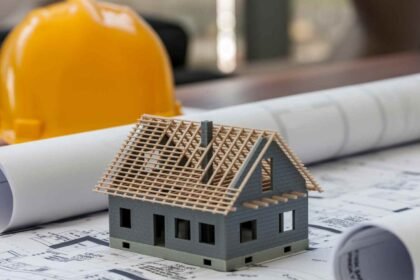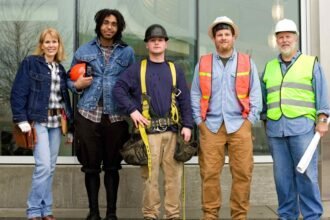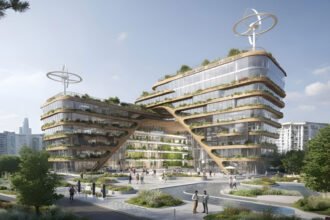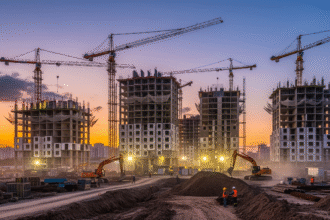Housing Demand Rises While Permits Lag Behind
Across the United States, pressure is building in the housing market. Economic growth, migration patterns, and the return of renting demand are fueling a steady surge in housing interest. In July 2025, starts for residential housing climbed 5.2 per cent from June, reaching an annual pace of about 1.43 million units. Despite this uptick, the issuance of new permits fell by 2.8 per cent to roughly 1.354 million, representing a 5.7 per cent drop compared with July 2024.
This divergence between rising starts and slipping permits underscores a growing challenge: while more homes are beginning to be built, the pipeline for future construction is slowing. That suggests potential trouble ahead if developers cannot secure authorizations for new projects.
Time to Build: The Permit Bottle-Neck
Compounding the slowdown in permit issuance, the duration from permit submission to construction completion has extended significantly. In 2023, it took about ten months, on average, to build a single-family home, from authorization to completion, including roughly one and a half months to obtain the permit and 8.6 months to build the structure.
Such drawn-out approval timelines inflate costs. Delays carry financial consequences: increased interest, property tax, insurance, utilities, and overhead add up. In some areas, each additional month in the permit process raises construction expenses by as much as 1 percent, roughly $4,400. In New York City, a two-year delay for mid-rise construction projects can tack on approximately $50,000 per unit.
Regional Disparities: Some Areas Lurch Ahead
Not all regions are affected equally. Some parts of the country continue to outpace national trends. In 2024, the national rate of housing authorization stood at around 10.1 units per 1,000 existing homes, a sharp drop from 11.7 in 2022.
Yet states like Idaho stood out, with about 21.2 new permits per 1,000 homes, more than double the national average. Similarly, fast-growing states such as North Carolina, South Carolina, Utah, and Arizona also achieved higher rates.
Among major metropolitan areas, Raleigh-Cary led the nation with 28.8 new units per 1,000 homes, followed closely by Austin (28.6) and Dallas–Fort Worth (22.2).
This pattern highlights how regions with more streamlined development codes and less resistance to zoning change manage to sustain construction momentum, even as national permit figures falter.
A Tale of Two Cities: Los Angeles and San Francisco
The contrast between locales is especially evident in California. In Los Angeles, the rebuilding process following catastrophic wildfires has been excruciatingly slow. Although state officials waived portions of environmental and permitting rules, such as parts of the California Environmental Quality Act (CEQA) as of early July, fewer than 200 of 800 permit applications had been approved. The average wait for a rebuild permit in the city stretched beyond 55 days, with county processes often taking even longer.
San Francisco has long faced its own permitting slowdown. In the early 2020s, the city’s average permit approval stretched into years, ranging from 450 days for initial review to 630 days for multi-family homes (and up to 860 days for single-family). Recent state legislation aims to shorten those timelines, but the impact remains to be seen.
These examples illustrate how even targeted relief and reform can be thwarted by procedural inertia, entrenched regulations, and local resistance.
What It Means: Affordability and Housing Shortages
The slowdown in permitting isn’t merely a scheduling glitch; it has tangible consequences for housing availability and affordability. High demand persists, driven by demographic shifts, work flexibility, and rental preferences. In July 2025, total housing starts hit 1.428 million units, with single-family construction climbing to 939,000 units.
But without new permits fueling future inventory, this growth may stall. Permits, already weak, declining month after month, fail to support the level of development necessary to close the gap. Experts estimate that the U.S. needs about two million new homes annually to address the shortage, yet permit issuance suggests we remain well short of that pace.
Moreover, affordability continues to flag. Builders are offering discounts as inventories climb; prices have dropped (about 5.9 percent), and mortgage rates hover above 6.5 percent, dampening demand still further.
Reform Efforts: A Path Forward?
Some initiatives point toward improvement. Policymakers encourage reducing discretionary permit review in favor of “by-right” processes, where projects aligning with zoning and codes proceed without public hearings. These reforms aim to cut costs, shrink uncertainty, and speed timelines.
Yet reform remains uneven. States and cities vary widely in how readily they allow denser housing, utilize modular construction, or enforce timelines. Areas like Austin illustrate how permitting reform, rezoning, and reduced parking mandates have helped cool rent inflation, rents there declined by roughly 22 percent since August 2023.
Still, achieving such progress nationwide requires not only policy incentives but political will, institutional coordination, and community acceptance.
In 2025, housing demand is pushing developers to break ground on more homes. Yet a shrinking stream of new permits and stubborn delays signal a looming lull in supply. Without faster approvals, especially in regions with rapidly increasing populations, the affordability crisis may deepen.
As we move forward, balancing safety, environmental safeguards, and speed will be key. If permitting systems remain sluggish, even the best-intentioned housing markets will struggle to catch up with need.









